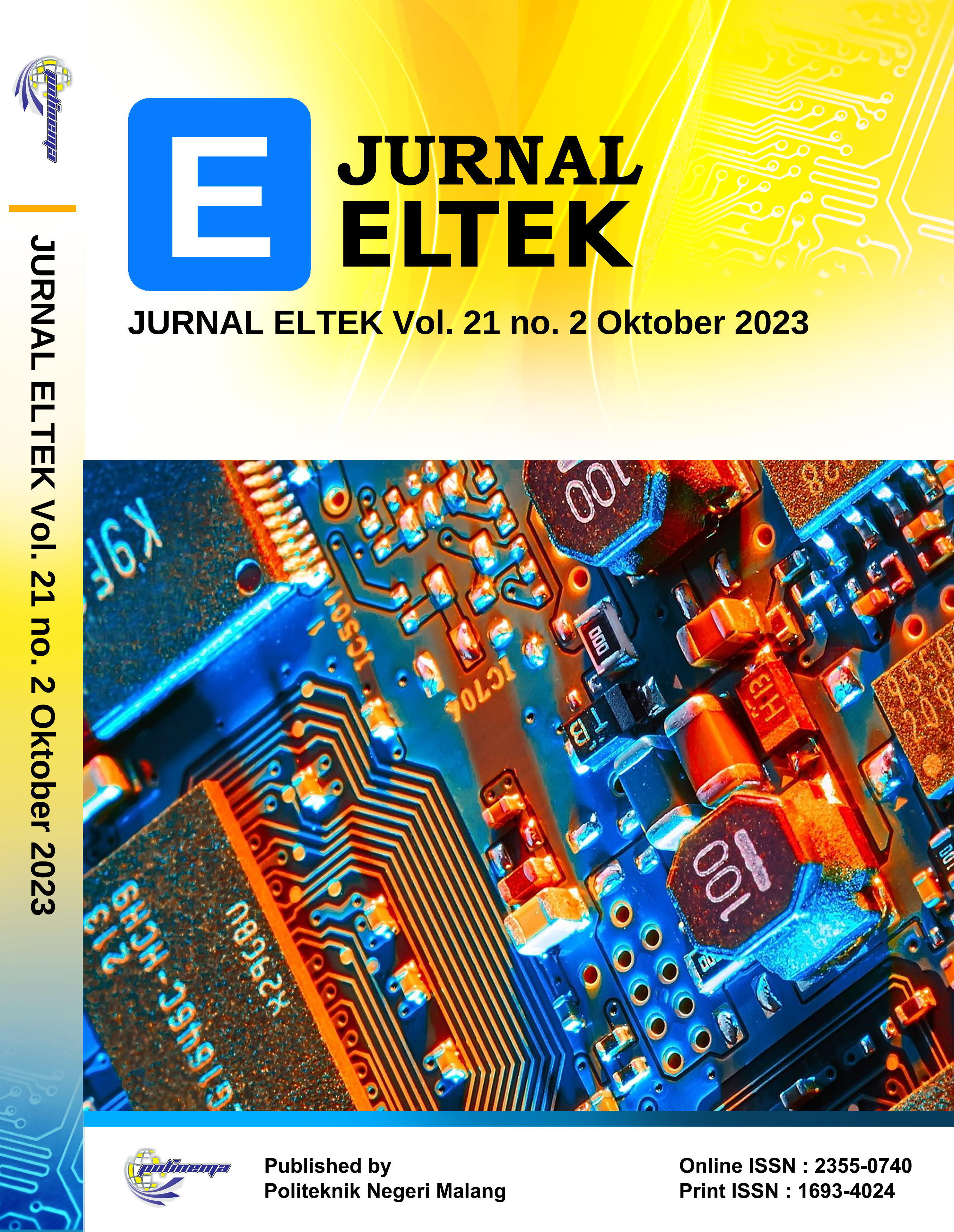Analisa response transient cascade control temperature dan pressure pada furnace PT. Z menggunakan metode direct synthesis
DOI:
https://doi.org/10.33795/eltek.v21i2.4508Keywords:
PID, Furnace, Direct SynthesisAbstract
Furnace pada PT. Z adalah furnace yang berfungsi untuk memanaskan heavy naptha hingga mencapai temperature 513℃ sebelum masuk ke rekator. Pada furnace menggunakan sistem pengendalian cascade temperature dan pressure untuk menjaga temperature outlet furnace dengan mengatur besarnya tekanan fuel gas untuk proses pembakaran yang masuk ke furnace. Temperatur Indicator Controller berperan sebagai master control yang memiliki aksi direct dengan mode controller Proportional Integral Derivative (PID) yang dalam kondisi operasinya mempunyai nilai Kp=75, τi=375, τd=2. Sedangkan Pressure Indikator Controller berperan sebagai sleve control yang memiliki aksi direct dengan mode controller Proportional Integral Derivative (PID) yang dalam konsisi operasinya mempunyai nilai Kp=1000, τi=1500, τd=0. Dari hasil simulasi menggunakan kondisi aktual diperoleh delay time 16,302s, settling time 2,8288s, rise time 0,2686s serta terdapat overshoot 19,880% dan undershoot 1,725%. Sedangkan hasil simulasi menggunakan metode direct synthesis diperoleh delay time 33,445s, settling time 10,5639s, rise time 5,557s, overshoot 0,0054% dan tidak terdapat undershoot. Berdasarkan perbandingan antara kondisi aktual dan metode direct synthesis dilihat bahwa walaupun terdapat keterlambatan untuk mencapai kondisi steady state namun dengan metode direct synthesis ini, dapat menghilangkan keadaan overshoot dan undershoot yang muncul pada kondisi aktual yang dianggap dapat mengurangi kinerja sistem. Oleh karena itu metode direct synthesis bisa dikatakan mempunyai respon sistem yang baik.
ABSTRACT
Furnace at PT. Z is a furnace whose function is to heat heavy naptha to a temperature of 513℃ before entering the reactor. The furnace uses a cascade temperature and pressure control system to maintain the furnace outlet temperature by regulating the amount of fuel gas pressure for the combustion process that enters the furnace. The Temperature Indicator Controller acts as a master control which has direct action with Proportional Integral Derivative (PID) controller mode which in operating conditions has values Kp=75, τi=375, τd=2. Meanwhile, the Pressure Indicator Controller acts as a control arm which has direct action with Proportional Integral Derivative (PID) controller mode which in its operating conditions has the values Kp=1000, τi=1500, τd=0. From the simulation results using actual conditions, the delay time was 16.302s, settling time was 2.8288s, rise time was 0.2686s and there was an overshoot of 19.880% and an undershoot of 1.725%. Meanwhile, the simulation results using the direct synthesis method obtained a delay time of 33.445s, settling time of 10.5639s, rise time of 5.557s, overshoot of 0.0054% and no undershoot. Based on a comparison between actual conditions and the direct synthesis method, it can be seen that although there is a delay in reaching steady state conditions, the direct synthesis method can eliminate overshoot and undershoot conditions that appear in actual conditions which are considered to reduce system performance. Therefore, the direct synthesis method can be said to have a good system response.
References
CNSC Technical Training Group, “Basic Instrumentation Measuring Devices and,” Sci. React. Fundam. Instrum. Control 7, 2003.
W. Bolton, Instrumentation and Control Systems, Third Edition. 2021. doi: 10.1016/C2020-0-00286-0.
K. Lita and V. E. Sari, “Evaluasi Kinerja dan Efisiensi Furnace (31-F-101) pada Naptha Hydrotreating Unit,” 2017.
Y. V. P. K. Y V Pavan Kumar, “Cascaded PID Controller Design for Heating Furnace Temperature Control,” IOSR J. Electron. Commun. Eng., vol. 5, no. 3, pp. 76–83, 2013, doi: 10.9790/2834-0537683.
R. N. Amalia and Wijaya Kusuma, “Desain Simulasi dan Analisa Closed Loop Boost Converter Terintegrasi Solar PV Berbasis PID,” Elposys J. Sist. Kelistrikan, vol. 10, no. 1, pp. 48–53, 2023, doi: 10.33795/elposys.v10i1.1078.
I. Control, Anti-windup strategies, no. 9781846285851. 2006. doi: 10.1007/1-84628-586-0_3.
N. E. Helwig, S. Hong, and E. T. Hsiao-wecksler, No 主観的健康感を中心とした在宅高齢者における 健康関連指標に関する共分散構造分析Title.
N. Taufiqulmajid and E. Utami, “Analisa Pengendalian Temperature Outlet Furnace Dengan Metode Pid-Fuzzy Gain Scheduling,” Nauval Taufiqulmajid, SNTEM, vol. 1, no. November, pp. 973–984, 2021.
C. Buku Asli, KONTROL PID UNTUK PROSES INDUSTRI Beragam Struktur dan Metode Tuning PID praktis (Iwan Setiawan). 2008.
P. N. Paraskevopoulos, Modern control engineering. 2017. doi: 10.1201/9781315214573.
Emerson Fisher, “Control valve handbook 5 edition,” Emerson Autom. Solut., p. 338, 2005.
Y. E. Konoralma and A. Surya Wardhana, “Analisa Respon Transient Pada Pressure Control System Tangki Tk-8006 Dengan Metode Direct Synthesis Di Lapangan Pt. Xyz,” Yoslin Eslin Konoralma, SNTEM, vol. 1, no. November, pp. 1060–1068, 2021.
Prihatama Kunto Wicaksono, “Pengendalian Pergerakan Hover Quadcopter Hover Movement Control of Quadcopter Using Artificial Neural Network Pid,” Tugas Akhir ITS, 2016.
Downloads
Published
How to Cite
Issue
Section
License
Copyright (c) 2023 Anggellieqque Karadeit, Astrie Dewi

This work is licensed under a Creative Commons Attribution-ShareAlike 4.0 International License.







